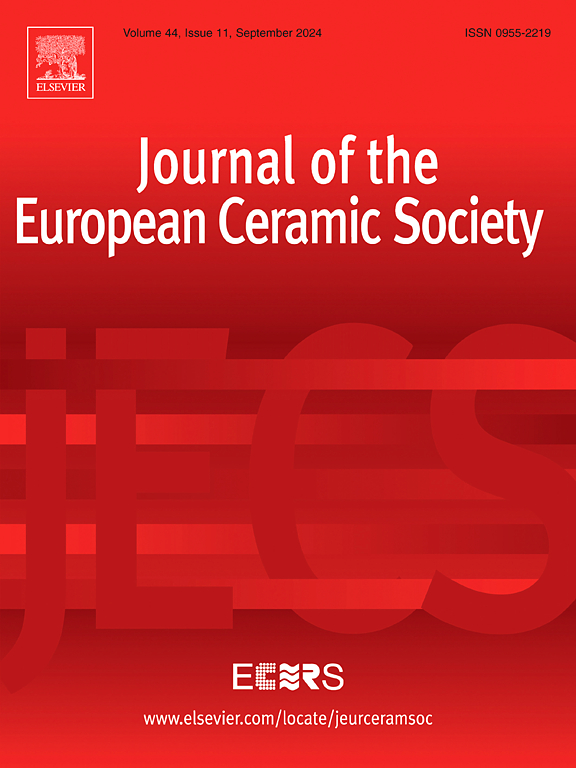Microanalytical methods analyzing early European porcelains to study hard paste microstructural evolution
IF 5.8
2区 材料科学
Q1 MATERIALS SCIENCE, CERAMICS
Journal of The European Ceramic Society
Pub Date : 2025-02-18
DOI:10.1016/j.jeurceramsoc.2025.117295
引用次数: 0
Abstract
This paper presents a proof-of-concept study using chemical quantification from scanning electron microscopy and electron dispersive spectroscopy (SEM-EDS) mapping of cross sections of sub-millimeter (mm) samples of two porcelain objects from the Cooper Hewitt Smithsonian Design Museum (CHSDM) to replicate European porcelain recipes for microstructural evolution experiments. Meissen and Royal Copenhagen replica porcelain bodies were fired in a custom-designed gradient furnace, allowing eight samples of each ware to be fired across a temperature range from 1089°C to 1317°C. Measurements such as bulk density and water absorption, in combination with a microanalytical methodology allowed porosity and quartz dissolution to be tracked as functions of firing temperature. Microstructural assessment including pore size comparison between the historic sample set and the newly made replica pieces suggests that both the Meissen and Royal Copenhagen objects were fired under similar conditions with the latter being over-fired.
求助全文
约1分钟内获得全文
求助全文
来源期刊

Journal of The European Ceramic Society
工程技术-材料科学:硅酸盐
CiteScore
10.70
自引率
12.30%
发文量
863
审稿时长
35 days
期刊介绍:
The Journal of the European Ceramic Society publishes the results of original research and reviews relating to ceramic materials. Papers of either an experimental or theoretical character will be welcomed on a fully international basis. The emphasis is on novel generic science concerning the relationships between processing, microstructure and properties of polycrystalline ceramics consolidated at high temperature. Papers may relate to any of the conventional categories of ceramic: structural, functional, traditional or composite. The central objective is to sustain a high standard of research quality by means of appropriate reviewing procedures.
 求助内容:
求助内容: 应助结果提醒方式:
应助结果提醒方式:


